Tungsten Carbide Die is a hard alloy product commonly used in the manufacture of wear-resistant cutting tools such as drill bits, milling cutters, and cutting tools. This material has the characteristics of high hardness, high wear resistance, and high heat resistance, so it can withstand high-strength cutting and grinding processing, and is widely used in fields such as mechanical processing, aerospace, and automotive manufacturing.
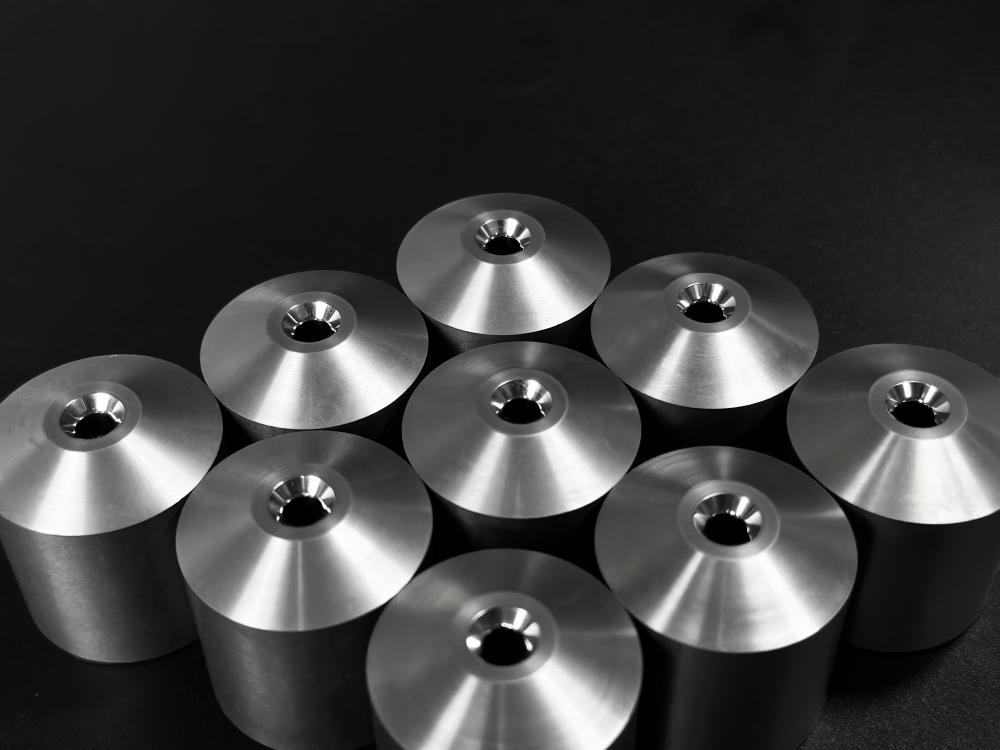
Tungsten Carbide Die is manufactured through powder metallurgy technology, and its preparation process includes steps such as raw material mixing, pressing and forming, sintering, processing, and coating. Among them, compression molding is the process of mixing Tungsten Carbide powder with an appropriate amount of binder to produce the desired shape and size; Sintering is the process of heating the pressed material to a high temperature, causing the binder to evaporate and forming a metallurgical bond between tungsten carbide particles; Processing is the process of cutting, grinding, and polishing sintered materials to achieve the required size and accuracy; Coating is used to improve the wear resistance and heat resistance of cutting tools. Usually, a hard coating such as TiN, TiCN, etc. is applied to the surface of the tool.
The main components of Tungsten Carbide Die are tungsten carbide (WC) and cobalt (Co), among which tungsten carbide has high hardness and wear resistance, while cobalt can improve the toughness and strength of the material. In addition, tungsten carbide molds also contain a certain amount of elements such as titanium (Ti) and chromium (Cr), which can improve the material's heat resistance and oxidation resistance.
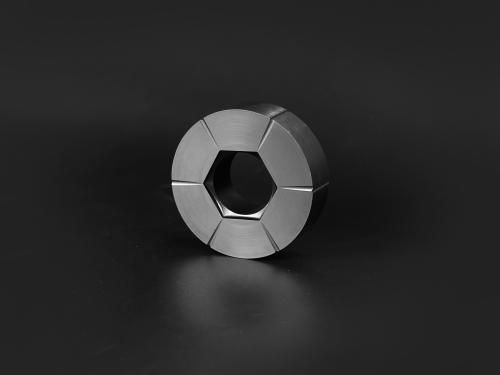
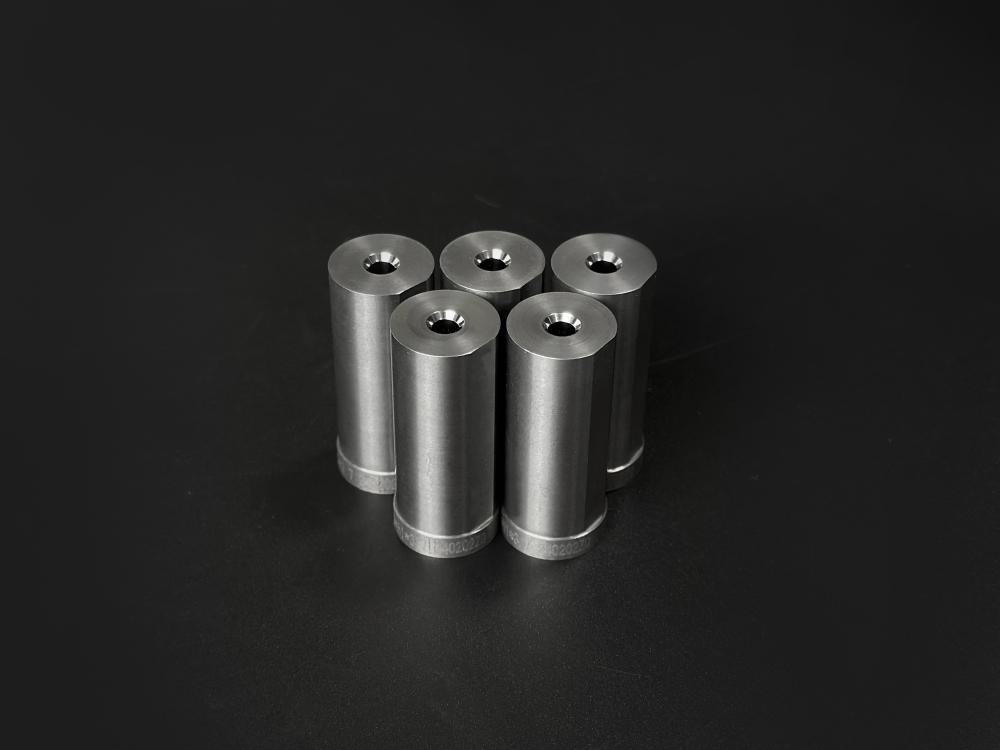
Properties of Tungsten Carbide Dies
1.Hardness:Tungsten carbide is one of the hardest materials available, with a hardness rating of around 8.5-9 on the Mohs scale. This hardness allows the die to maintain its shape and sharpness even under intense pressure.
2.Wear Resistance:The material's superior wear resistance ensures a long service life, reducing the frequency of die replacements and maintenance.
3.Heat Resistance:Tungsten carbide dies can withstand high temperatures, making them suitable for processes involving heat or thermal stress.
4.Dimensional Accuracy:The precision of tungsten carbide allows for the production of dies with tight tolerances and accurate dimensions, ensuring consistent quality in the final products.
Manufacturing Process
The production of tungsten carbide dies involves several key steps:
1.Powder Preparation:Tungsten carbide powder is mixed with a binder material, usually cobalt, to form a composite. The ratio of tungsten to carbide and the type of binder can be adjusted to achieve specific properties.
2.Molding:The powder mixture is pressed into the shape of the die using high-pressure molds. This step forms the initial shape of the die but does not yet achieve the final hardness.
3.Sintering:The molded die is heated in a sintering furnace at extremely high temperatures (typically around 1400-1600°C). This process causes the binder to melt and bind the tungsten carbide particles together, resulting in a solid, dense, and hard material.
4.Machining and Finishing:After sintering, the die is machined to precise dimensions and surface finishes. This step may involve grinding, polishing, and other processes to achieve the final specifications.
5.Testing and Quality Control:The finished dies are tested for quality and performance, including hardness, wear resistance, and dimensional accuracy. Any defects are identified and corrected to ensure that the die meets the required standards.
Applications
Tungsten carbide dies are used in a wide range of industries, including:
1.Stamping and Forging:In automotive and aerospace industries, tungsten carbide dies are used for stamping and forging metal parts with high precision and durability.
2.Extrusion:In the plastics and rubber industries, tungsten carbide dies are employed to shape and form materials during the extrusion process.
3.Molding:Tungsten carbide dies are used in injection molding and compression molding processes to produce high-quality plastic and metal parts.
4.Wire Drawing:In the wire and cable industry, tungsten carbide dies are used to draw and shape wire, ensuring consistent diameter and quality.
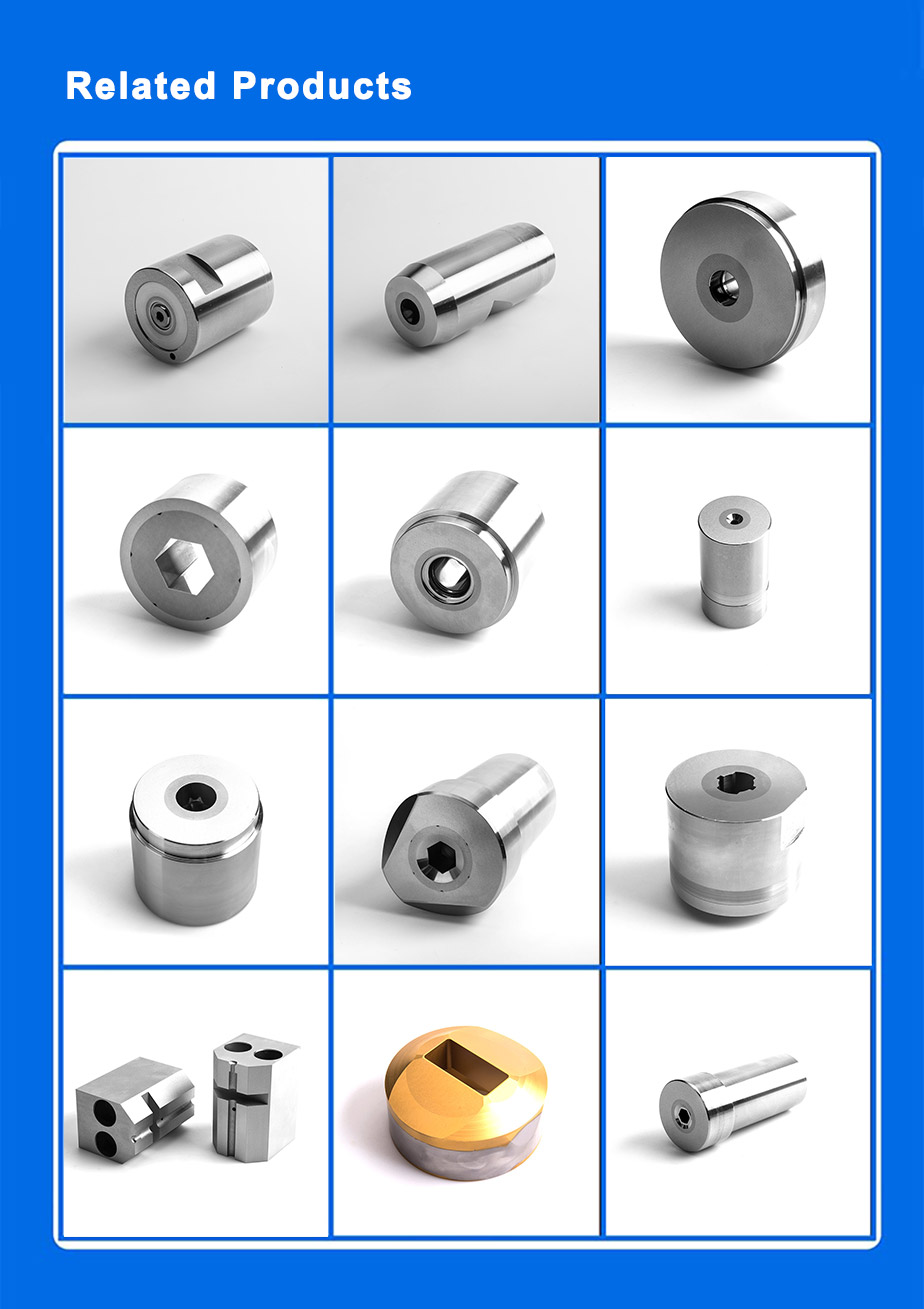
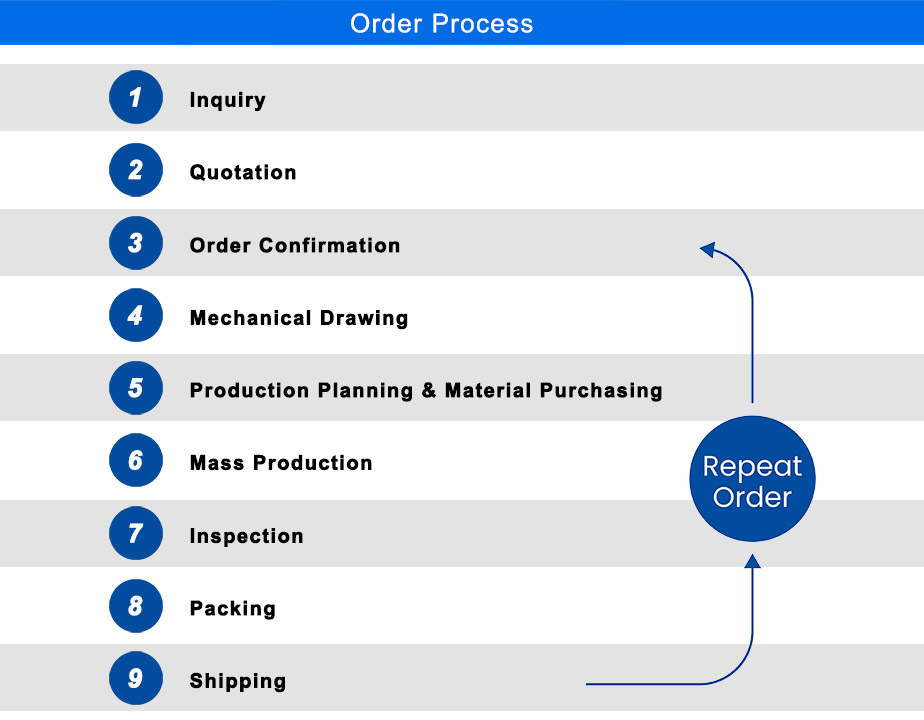

What is Tungsten Carbide Die?
Tungsten Carbide Die is a kind of die made of tungsten carbide, which is widely used in processes requiring high precision and durability due to its extremely high hardness and wear resistance.
What are the main applications of Tungsten Carbide Die?
Tungsten Carbide Die is mainly used in the fields of wire drawing, cold heading, extrusion and metal molding for manufacturing products such as bolts, screws, metal tubes, wires and so on.
What are the advantages of Tungsten Carbide Die over traditional steel dies?
Compared with traditional steel dies, Tungsten Carbide Die has higher hardness and wear resistance, longer service life, higher accuracy, less wear and tear and less frequent replacement during the production process.
Why is Tungsten Carbide Die more wear resistant than other materials?
Tungsten Carbide Die is made of Tungsten Carbide, which has a very tight molecular structure and has extremely high hardness and wear resistance, so it can maintain stable performance in high friction and high pressure environments.
What is the main disadvantage of Tungsten Carbide Die?
The main disadvantage of Tungsten Carbide Die is that it is brittle and prone to cracking when subjected to severe impact. In addition, the cost of manufacturing and machining Tungsten Carbide Die is high.
How to extend the service life of Tungsten Carbide Die?
Ways to extend the life of Tungsten Carbide Die include proper operating procedures, avoiding excessive impacts, regular maintenance and inspection of the die condition, and lubricating the die under proper conditions.
How does Tungsten Carbide Die perform in high temperature environments?
Tungsten Carbide Die has high heat resistance, can maintain its hardness and shape stability in high temperature environment, and is not easy to heat deformation.
Is the manufacturing process of Tungsten Carbide Die complicated?
Yes, the manufacturing process of Tungsten Carbide Die is more complicated, because the hardness of Tungsten Carbide Die is extremely high, which requires the use of specialized processing equipment and technology, which also makes its production cost relatively high.
What are the factors to consider when choosing Tungsten Carbide Die?
When choosing Tungsten Carbide Die, you need to consider the dimensional accuracy requirement of the die, the required hardness level, the application environment of the die (e.g. temperature, pressure), as well as the economic cost and expected service life.
What types of metal processing is Tungsten Carbide Die suitable for?
Tungsten Carbide Die is suitable for types of metal processing that require high precision and wear resistance, such as wire drawing, cold heading, metal extrusion, and other processes involving high intensity and high pressure environments.
Product parameters:
Product Name: | Tungsten Carbide Die |
| Specification: | Custom |
| Customization: | Material, size, shape, convex and concave marking, coating, laser engraving mark and packing are all customizable. |
| Product Material: | Carbide.ASP23 Vanadis.CPMRTXM4.SKD11SKD61HSSA2M2D2SUJ2.S45C.ect |
| Standard: | DIN ANSI BS JIS |
| Surface Treatment: | TiCNTiN,Aitain,Ticrnnitriding Black oxygened Black coating etc available |
| Polishness: | Close to Ra0.2 Hardness Depends on material(HRC60~94) |
| Tolerance: | +-0.002mm |
| Hardness: | Depends on material(HRC60~94) |
| Application: | Machinery Parts ,mold |
More Parameter Details | |||
| Place of Origin: | Dongguan, Guangdong, China | Brand Name: | Donglong, or your brand, it’s your choice |
Model Number: | Shaping Mode: | Grinding, wire cutting, EDM, cnc machining, cnc turning, cnc Milling | |
| Product Material: | Carbide.ASP23 Vanadis.CPMRTXM4.SKD11SKD61HSSA2M2D2SUJ2.S45C.ect | Demension (Size): | Customized |
| Surface Treatment: | TiCNTiN, Aitain, Ticrnnitriding Black oxygened Black coating etc available | Application: | Machinery Parts ,mold |
| Supply Ability: | 10000 Pieces per Week | Package: | Cartons, wooden boxes, pallets, packaged according to weight and customer requirements |
Delivery Time (Lead Time): | Samples in 7 days, cargo in 20 days, the time depends on the quantity the order. | FOB Port: | Shenzhen, or Guangzhou |
| MOQ: | 1 pcs | Payment: | T/T, Western Union, Paypal, L/C |
Material for Core of Cold Heading Dies | ||||||
Grade | WC+Other | Co | Grain Size | Density | Hardness | TRS |
(±0.5%) | (±0.5%) | (g/cm³) | (HRA)±0.5 | (N/mm²) | ||
KG5 | 88 | 12 | Medium | 14.31 | 88.3 | 340 |
KG6 | 86 | 14 | Medium | 14.12 | 87.3 | 320 |
EA65 | 82 | 18 | Coarse | 13.75 | 85 | 300 |
EA90 | 76 | 24 | Coarse | 13.22 | 82.8 | 270 |
ST6 | 85 | 15 | Coarse | 13.8 | 86 | 270 |
ST7 | 80 | 20 | Coarse | 13.4 | 85.3 | 270 |
VA80 | 80 | 20 | Coarse | 13.58 | 84 | 280 |
VA90 | 78 | 22 | Coarse | 13.39 | 82.5 | 240 |
VA95 | 75 | 25 | Coarse | 13.12 | 81.5 | 220 |
Material for Casing of Cold Heading Dies | |||
Material | Hardness (HRC) | Features | Applications |
H13 | 59-61 | H13 is a chromium molybdenum hot work steel with exceptional hot hardness and abrasion resistance, general hardness, and toughness. | Used for extrusion dies, forging dies, stamping tools, etc. |
SKD11 | 58-61 | SKD11 tool steel has good wear resistance and size ability after heat treatment. | Used for tensile dies, cold extrusion dies, first punch holder, etc. |
SKD61 | 43-53 | SKD61 steel is a high-grade die casting die. It has heat shock resistance, heat deformation resistance, heat fatigue resistance. | Used for heat work dies, cold heading dies, second punch holders. |